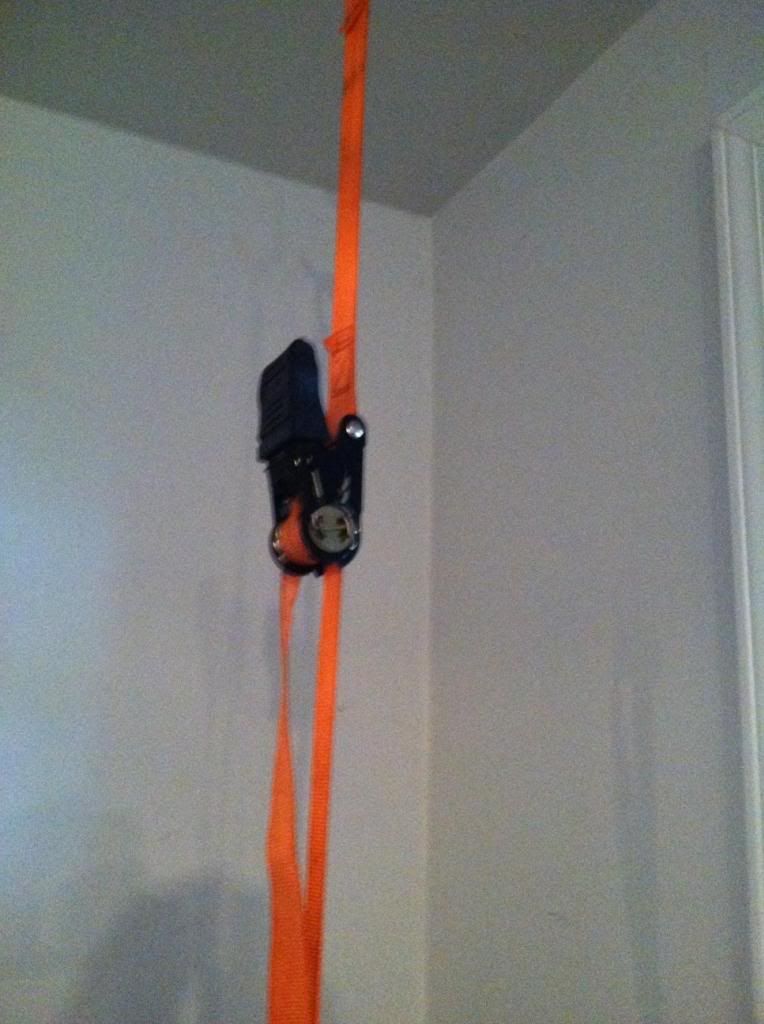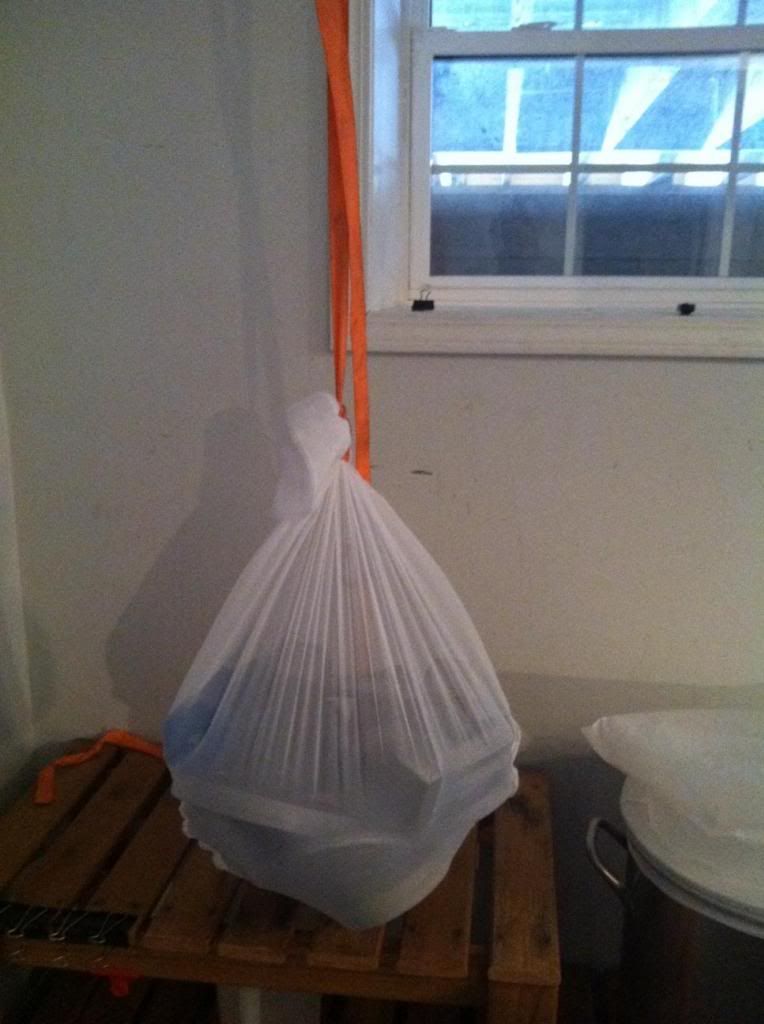Seven
Well-Known Member
Nice experiment wilserbrewer. Another thought is to try it with the bag wet and at mash out temp of 170F.

What do you think about also using them for lining the kettle and boiling the entire time? Any chance they can melt or produce off flavors?
I would not boil in them. After all its some kind of plastic, if its polyester ...
Polyester has a melting point of roughly 480F (multiple sources, google it).











![Craft A Brew - Safale S-04 Dry Yeast - Fermentis - English Ale Dry Yeast - For English and American Ales and Hard Apple Ciders - Ingredients for Home Brewing - Beer Making Supplies - [1 Pack]](https://m.media-amazon.com/images/I/41fVGNh6JfL._SL500_.jpg)



It makes so sense in boiling with the bag still in place. So no, I don't boil my bag.

It makes no sense to boil the BIG (grain) bag.

DING DING - ROUND TWO
Well for kicks and curiosity, we stepped it up and conducted round two.
The weight...120 lbs...

The ratchet strap...

The lift...

No issues at all, not even a stretched seam. This is the upper limit, the bag is nearly full of steel at this point...haha. Cheers and hope you enjoyed this silly experiment...
I've used BIAB for a while now ( more than 20 batches with the same keggle sized bag) and know the weight capability is good.
For that matter, I know the squeezing capability is good (cuz I'm cheap like that), but what is the max pressure the seams on a bag can handle? I assume the seams are the weak point for this one.
If one had a bag one was willing to sacrifice, wring out the grains post-mash as you normally would and weigh the bag/damp grain. Figure out how much water remains in the grains from that.
Once the boil is going and you're now bored, lay out a tarp under your wringing setup and give it another go (until failure). Trick will be how to collect the liquids so you know how much more you've extracted without adding grain back in when the bag fails..... Totally an overcomable obstacle.
Bonus is to compare a) how dry you normally get the grains, and b) how dry you *could* get them if you went to extremes.
This could also be a bit of a selling point for the bags: I know a lot of people are afraid of wringing the grains, but I want data to prove out why I shouldn't wring harder before I can buy into it. (My dad's a professor and statistician; I grew up to the phrase, "Show me the data," whenever I had some statement to make.)

No problem Nate, I just don't understand the fascination with trying to capture every last drop of wort....I find it much easier to just let gravity drain the bag, then I happily pass on the last little bit of wort to the deer in the back feeding at the spent mash pile. I figure less than 25 cents, and you'd be hard "pressed" to capture half that, let alone wreck your bag in the process.
Cheers!
wilser
I would like to know just when I'm getting close to deep doo doo cuz I just blew out a seam in the side of my bag.
Heck: each their own way of doing things.
Nate
I would like to know just when I'm getting close to deep doo doo cuz I just blew out a seam in the side of my bag.

Cheers!
wilser
I realize this is an old thread, but I didn't have the spreadsheet to answer this question when it was first brought up.That's pretty cool.
However, I find it hard to believe that the sugars removed from the grain during the mash weighs more than the water the grain absorbs. It has seemed pretty obvious in my few BIAB batches that the grains weighed more after absorbing water than they did before I dumped them in the kettle.
I might be wrong, but I'd have to see some proof from a scientific test of some sort before believing it. Of course, there is a big difference between the weight as it is lifted from the kettle and after it has drained sufficiently. So, any test of this question would have to be specific about the amount of time for draining before weighing the spent grains.
